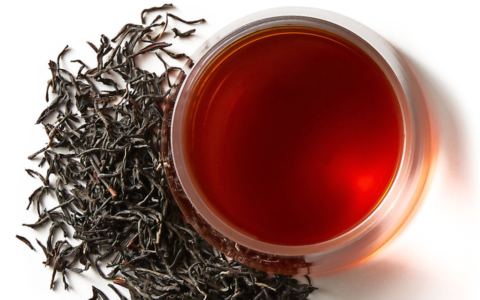A Detailed Overview to Indian Tea Industry – With Facts and Figures
The bulk of Indian tea production is CTC, at 90%, while orthodox accounts for 8.4%. The rest comes from green tea. CTC also makes up 60% of Indian tea exports. Orthodox tea from Assam can on an average fetch Rs 500 per kg, which is twice as high as CTC. Prime Darjeeling orthodox commands prices three times as much as Assam orthodox. Orthodox also costs around 15% more than CTC and is more labour intensive as leaves have to be plucked with more care than for CTC.


There is potential for black tea, says a spokesperson for Tata Global Beverages, which owns brands such as Tata Tea and Tetley varieties. The market for green, specialty, fruit & herbal teas can also be widened, adds the spokesperson. Sales of green tea, thanks to its perceived health benefits, are on the rise. According to Euromonitor, the green tea market grew 22% between 2016 and 2017, albeit on a low base.
Tea is the world’s and India’s beverage of choice, after water. The organised branded tea segment was at about Rs 12,970 crore in 2017, up from Rs 12,240 crore in 2016, according to market research firm Euromonitor International. India is the world’s second largest producer of tea, after China. In 2017-18, it recorded the highest production, at 1,325 million kg, 6% higher than the previous year. Exports grew at more than twice that rate to hit 257 million kg. In 2016, the latest year for which g global data is available, India produced a fourth of the world’s tea but accounted for just over a tenth of total exports, thanks to its huge domestic market. There is scope for Indian tea growers to up their share of the global export market, say experts.
Production Cost
But there are some problems that stop this industry from reaching its potential. Azam Monem, chairman of the Indian Tea Association, says production costs have risen at twice the rate of prices over the past decade. The market is no longer lucrative for producers as prices have stagnated in the Rs 125-132/kg range over the past five years. In the organised sector, labour costs are responsible for two-thirds of the cost of production. He wants the production subsidy for orthodox tea to be raised from Rs 3 a kg to Rs 20 a kg to make it more attractive.
In July, the Assam government hiked daily wages for tea garden workers by Rs 30 to Rs 167, compared with Rs 159 in West Bengal. Estates pay provident fund and gratuity, and provide housing, ration, firewood and medical benefits. Tea estates also have to contend with the rising contribution from small tea growers, who, by definition, cultivate less than 25 acres. Between 2014-15 and 2017-18, their share of Indian tea production has risen from 34% to 47%. The labour costs of these growers are not as high as that of the gardens. “Tea gardens are at a distinct disadvantage compared to small tea growers. The government should ensure a level-playing field,” says Nazrana Ahmed, chairperson of the Assam Tea Planters Association.

In this situation, there have been calls for a shift from CTC to orthodox for a higher price realisation, to ensure better margins, and to tap the export market. “The Indian market has made us complacent. It used to be easy and lucrative,” says Monem. Higher wages, however, have not increased labour strength. Mohammed Ali Hasan, manager of the Simulbarie Tea Company estate in Siliguri, says he has 25% fewer workers than required, which has forced him to turn to mechanised plucking over the past couple of years. Simulbarie makes CTC.
Darjeeling is known the world over for its first flush and second flush teas. First flush, which is tea plucked in March-April, is smooth on the palate and has a light golden colour. It sells for an average of Rs 1,500 a kg. Some estates get much more for their produce. Second flush, which is plucked between mid-May and mid-July, has fruity notes and a dark amber colour. It fetches around Rs 1,200 a kg.
“Sri Lanka has been able to do an incredible job in marketing their tea and Dilmah (https://www.dilmahtea.com/) is the first brand from south Asia to achieve the kind of scale it has.” Monem, who is also a director at McLeod Russel India, says India does not have a single comparable brand. Gopal Upadhayay, operations manager with Teabox in Siliguri, says despite its long history in tea, India does not even have a tea sommelier course that can match Dilmah’s. Tea is one of Sri Lanka’s key foreign exchange earners.

Around 92% of Sri Lanka’s tea production in 2017 was orthodox and 94% of its production was exported. Dilhan C Fernando, CEO of Dilmah Ceylon Tea Company Plc, says there was an effort by the Sri Lankan government to encourage CTC over orthodox in the 1980s, which his father and founder of the company, Merrill, resisted. Dilmah is sold in 104 countries.

“It was possible for a brand linked to a specific origin to harness the positive sentiments associated with that origin many years ago, although in the current commercial environment the brand needs to make a vastly greater effort, especially in the premium segment,” says Fernando. Countries like India, Sri Lanka, Kenya and Indonesia should move beyond being just bulk tea exporters. “We are exporting the value that should accrue to our economies,” he adds.
View More Details: https://economictimes.indiatimes.com/industry/cons-products/food/indias-tea-industry-is-struggling-to-move-up-the-value-chain/articleshow/65456045.cms



